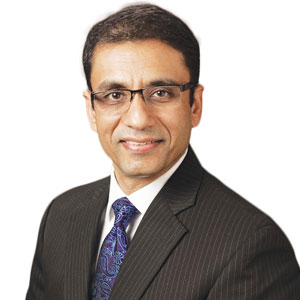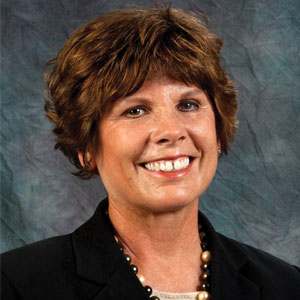THANK YOU FOR SUBSCRIBING

Christine Gibbs Stewart, CEO, Austmine
The digital wave is currently sweeping mining and changing the way we do business. While this wave might seem to be breaking late, it is not to say that mining isn’t innovative. In fact, mining is one of the most innovative industries in the world. You can’t build a business at 4000 metres in the middle of Andes without a high level of ingenuity. Mining has deployed more autonomous vehicles than any other industry with over 200 CAT and Komatsu trucks driving around in the Pilbara, Western Australia. Exciting things are happening, but the public general’s perception is that mining is a low-tech and labour-intensive practice.
In its very basic form, mining is simple. A shovel, pick, bucket and a bunch of rocks and you can mine, as millions of artisanal miners do every day to eke out a living, in sometimes very dangerous conditions. Take the mining business to scale and it is one of the most complex industries in the world. Mines are massive, they are extremely capital intensive and what is being mined, the orebody, changes everday, if not every hour. While we have very sophisticated technologies to tell us where the rich veins of minerals lie, we do not have a clear line of site in extracting them. These richveins are also getting hard and harder to find.
The scale of a mining operation cannot be underestimated. The footprint of the Roy Hill mine in Western Australia would cover greater metropolitan Brisbane (a city of 2million people), and the Chuquicamata mine in Chile swallowed, with permission, a town of 20,000.
Mines too are often in very remote locations. In the middle of the Atacama Desert, high in the Andes, deep in the jungles of Laos and even in the Arctic Circle, miners go to where no man has gone before. They bring with them equipment, roads, and even cities that are needed to run a thriving mining operation.
This scale, capital intensity and remoteness has perhaps made the adoption of digital technologies slower than in other industries. On average, it takes 15 years to adopt a new technology into the mining value chain, and miners have always been first to be second.
But there is now a real imperative to change how we do things, and mining is being swept up in the digital transformation we are all experiencing. Along with the big macro trends, what is driving the digital imperative for mining is 3-fold.
First, mining is facing more challenges than ever before. The minerals are getting harder to find, we need to dig deeper and ore grade is declining. This is layered with more complex regulation, environmental pressures and communities who are demanding more accountability.
Next, miners have spent the last few years taking costs out of their operations, and no longer can head count be slashed. Mining operations today are lean and to be more productive miners must do things differently, and technology has to be the answer.
Finally, as the miners have changed, so has the supply sector. Mining suppliers or the Mining Equipment, Technology and Services (METS) sector is highly sophisticated and is breaking new ground with world leading technologies in areas such as sensors, drones, real time monitoring, remote operations, simulation, digital twinning, robotics, automation and AI.
Traditional truck and shovel companies are re-defining themselves as data analysts and we have seen the rise of a vibrant mining start-up community driven by hackathons and accelerators, which is delivering very sophisticated solutions to some of biggest miners’ most pressing challenges.
In fact in Australia, the METS sector generates over $90 billion annually in revenue, and employs more than 400,000 people, which is double the traditional mining workforce. Combined with mining, METS makes up about 12% of the Australian GDP, and when all the minerals are exhausted, will be the sustainable legacy of mining itself.
Companies in the METS sector are doing some amazing things and are an important catalyst for the digital transformation which the mining industry is undergoing.
PETRA Data Science is transforming mining as we know it. Through PETRA’s team of data scientists and engineers, they have enabled resources companies to turn their data into actionable insights and operational improvements. For example, their digital twin (digital replica of physical assets) simulation at PanAust’s Ban Houayxai Gold-Silver operation was able to identify areas for problematic gold recovery, optimise drill and blast of certain rock types, find ideal mill settings and provide analysis of ‘what if’ situations for the end-user.
Brisbane-based Insitu Pacific are also making waves in the mining space. A subsidiary of Boeing, they have leveraged their expertise from defence and aviation in remotely piloted aircraft systems (RPAS) and unattended ground sensors (UGS) to bring value to mining customers. Through embracing the next level of mining automation, high quality data can be safely and efficiently collected and utilised to drive productivity. Insitu’s RPAS photogrammetric and LiDAR survey have been able to generate high-resolution imagery utilised for mapping and design, remote monitoring and asset inspection.
Traditional METS companies have also quickened the tide of industry change. Davies Wear Plates have been a long-term fixture in the Australian mining industry for providing safe wear plate installation and change out systems. The business has undergone a transformation over the last decade, to provide additional information and monitoring for clients, and their innovative WearSense product was released in 2018. WearSense is a completely wireless plug and play wear liner monitoring system, that enables real time condition based wear management and intelligence that improves productivity, safety and profitability. Customers of WearSense have seen up to 80% less downtime and 60% less labour used.
Control Systems Technology (CST) have long led the way in reliable belt weighing equipment required by bulk handling industries, especially mining. Founded in 1984, CST have developed a competitive advantage through the development of technology, and this is highlighted with the release of their IntelliRoll system. This is a wireless ‘weigher in a roller’ that can be placed directly into an idler frame. It looks like a standard roller, but is actually a ‘microbot,’ containing all the usual belt weigher electronics, load cells, a highly efficient energy harvesting generator and a battery so it can still work when the belt is not running. The IntelliRoll calculates flow rates and tonnes, stores the data and provides it to clients in an easy to digest mobile application, available in the app store.
With changes also come a raft of challenges. Issues around interoperability, or lack of, abound and like other industries mining is facing a severe skills shortage of the talent which is needed for the mines of tomorrow.
The rapid changes and challenges faced call for an industry wide response. Australia is making a concerted effort to overcome these challenges and leverage the best of what we have to offer through a number of government and industry development programs, technology projects and collaboration initiatives.
As the digital wave continues to advance, Australian METS and miners must strive to coordinate technology efforts to ensure they are solving fundamental operational challenges. While there has been progress in this space recently and new avenues for dialogue have opened through industry workshops and problem-solving challenges, mining has traditionally been averse to communicating operational issues to provide greater understanding of their needs to suppliers. Austmine is actively advocating for greater transparency within the industry, as without it, mining will continue to find point solutions, rather than transformative digital changes brought on through collaborative solution development.
While the focus remains on how mining companies can drive shareholder value while achieving safety, environmental and community outcomes, Australian METS are the silent sector in the background truly changing the face of the industry.
Check Out: Metals And Mining ReviewWeekly Brief
I agree We use cookies on this website to enhance your user experience. By clicking any link on this page you are giving your consent for us to set cookies. More info
Read Also














